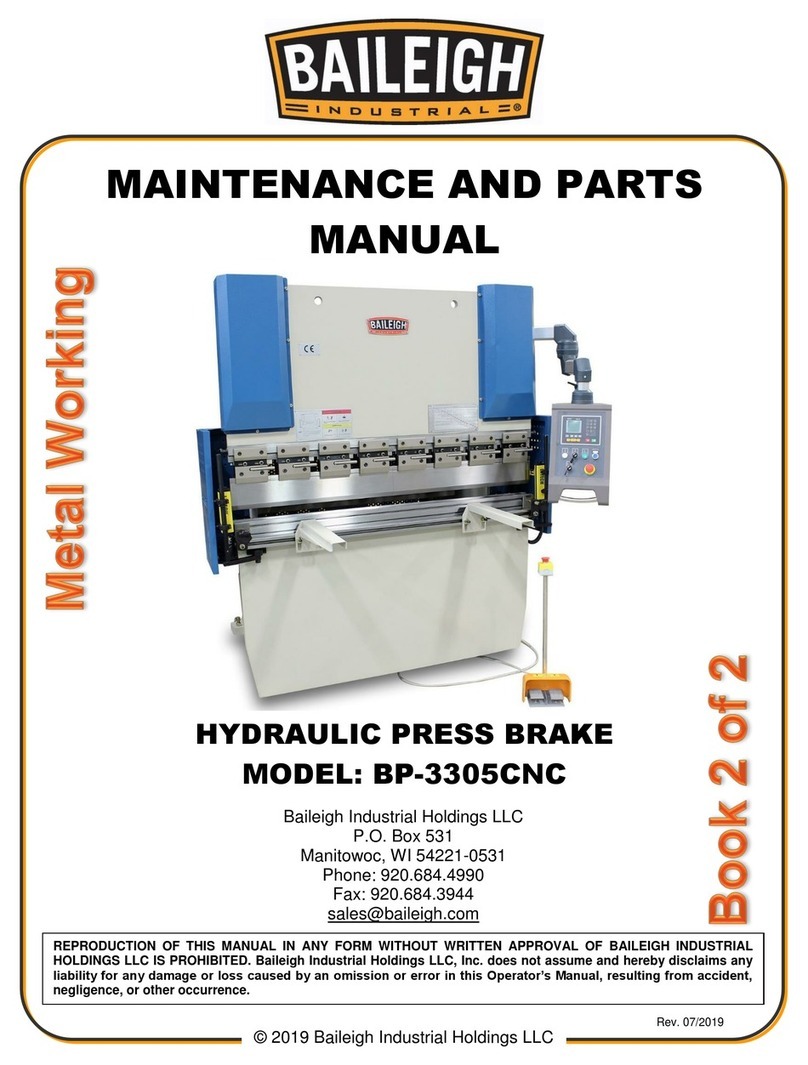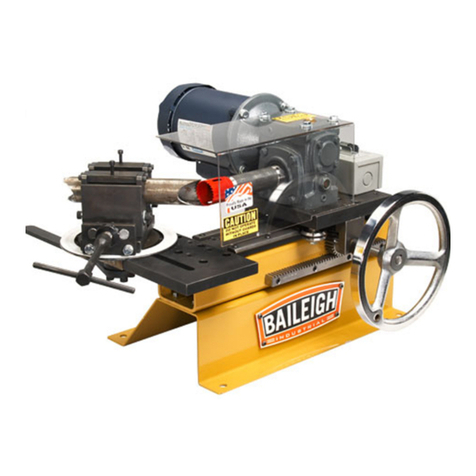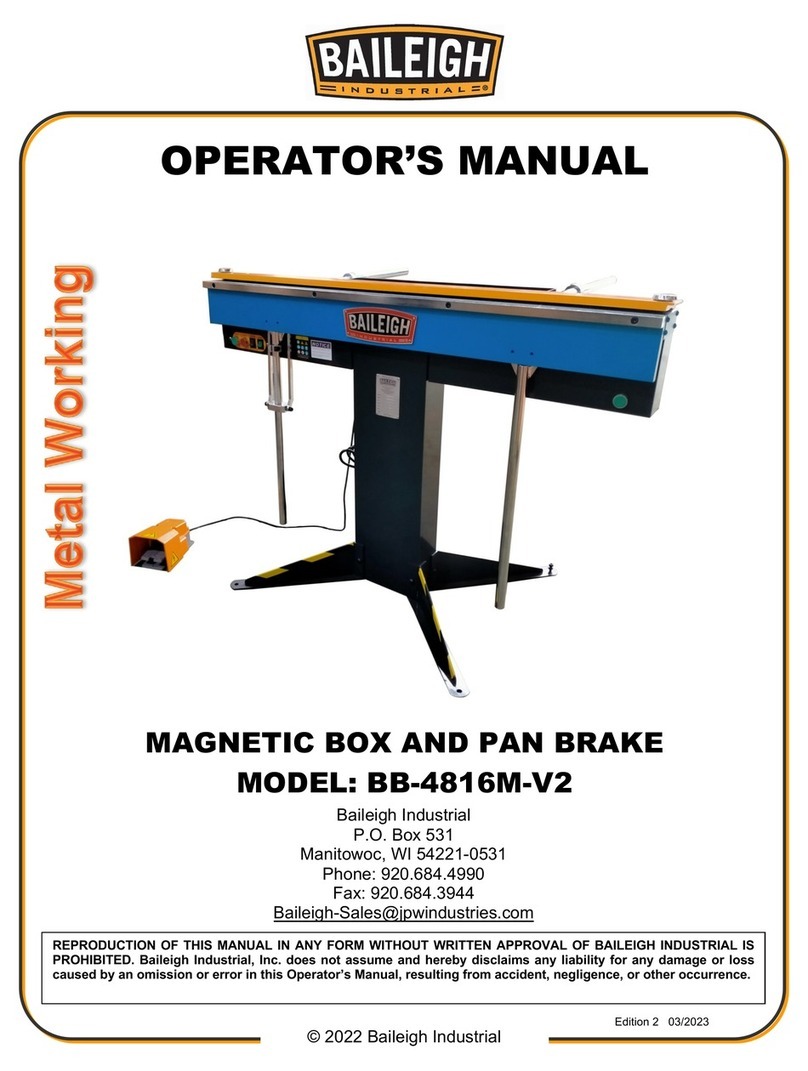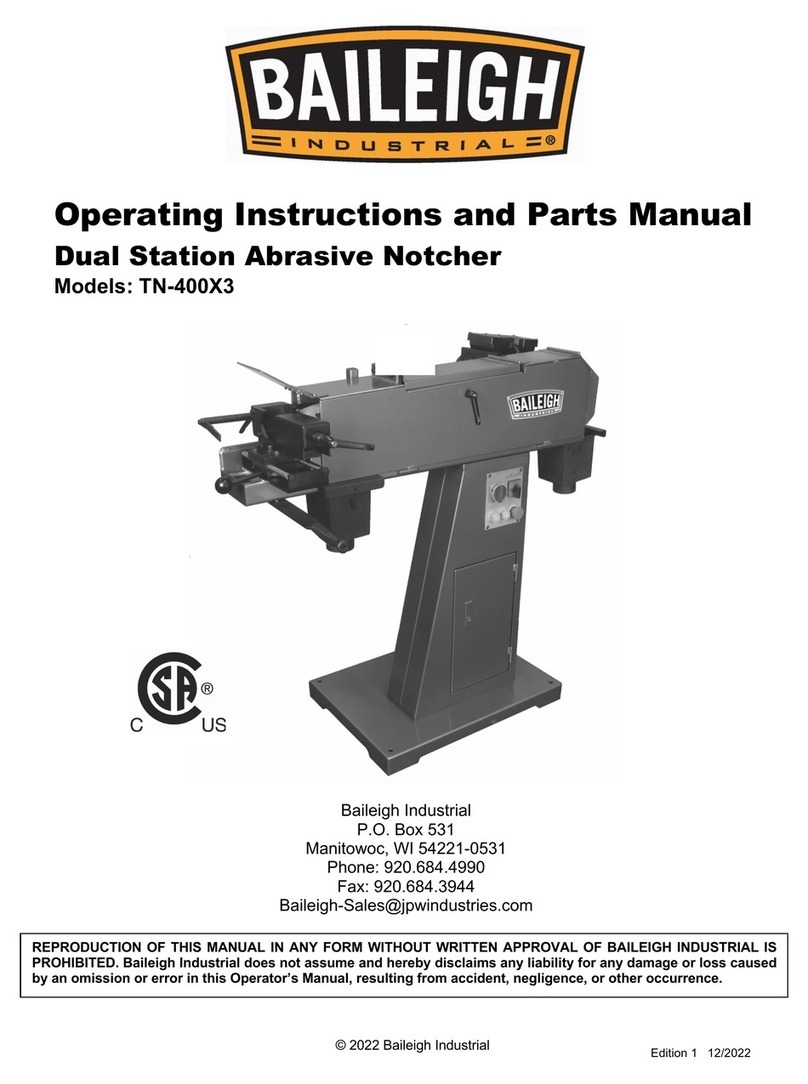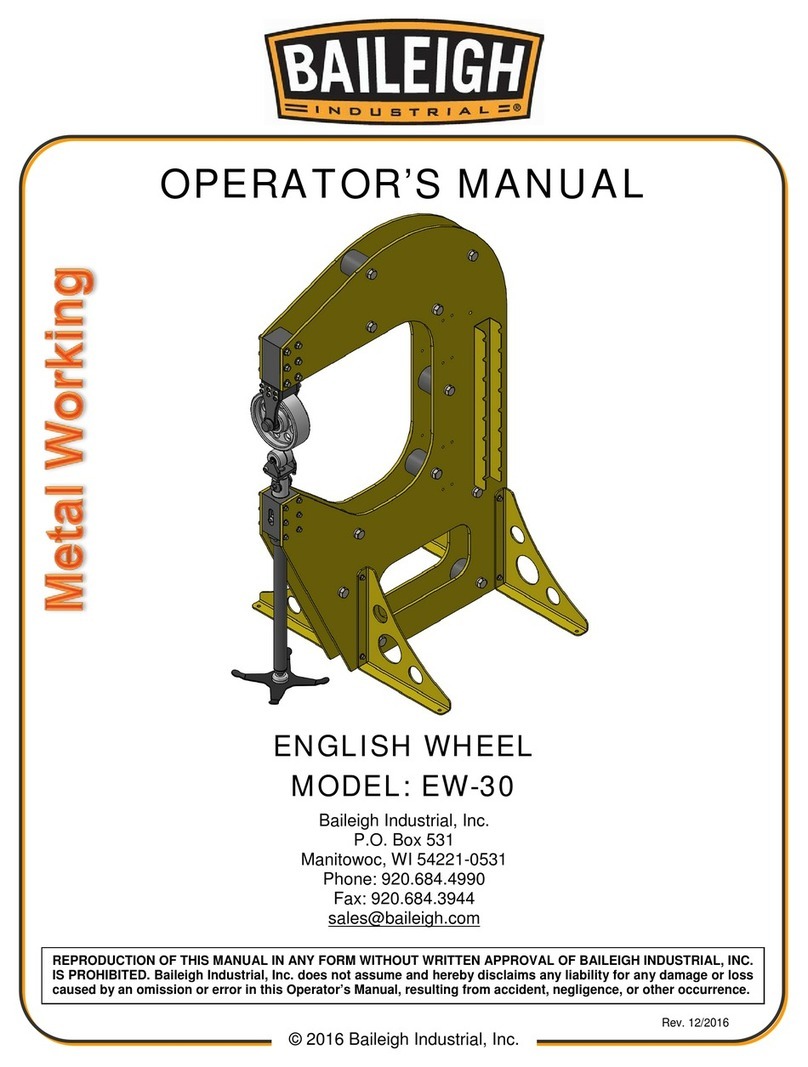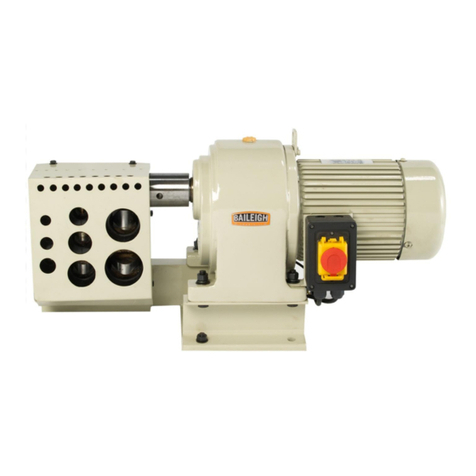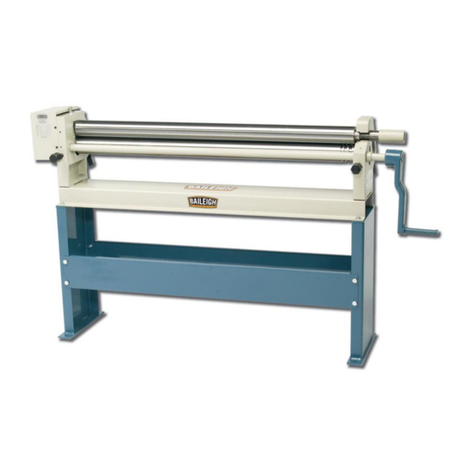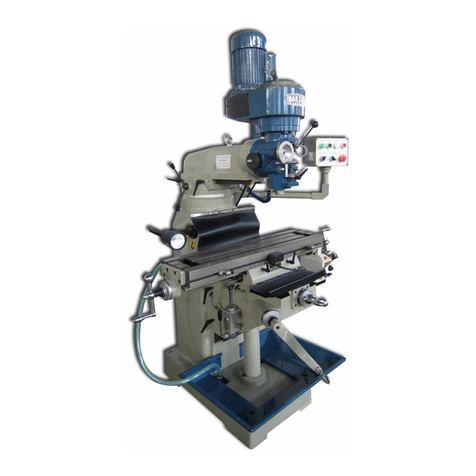
7. Dressing material edges. Always chamfer and deburr all sharp edges.
8. Do not force tool. Your machine will do a better and safer job if used as intended. DO NOT
use inappropriate attachments in an attempt to exceed the machines rated capacity.
9. Use the right tool for the job. DO NOT attempt to force a small tool or attachment to do the
work of a large industrial tool. DO NOT use a tool for a purpose for which it was not
intended.
10.Dress appropriate. DO NOT wear loose fitting clothing or jewelry as they can be caught in
moving machine parts. Protective clothing and steel toe shoes are recommended when
using machinery. Wear a restrictive hair covering to contain long hair.
11.Use eye and ear protection. Always wear ISO approved impact safety goggles. Wear a full-
face shield if you are producing metal filings.
12.Do not overreach. Maintain proper footing and balance at all times. DO NOT reach over or
across a running machine.
13.Stay alert. Watch what you are doing and use common sense. DO NOT operate any tool or
machine when you are tired.
14.Check for damaged parts. Before using any tool or machine, carefully check any part that
appears damaged. Check for alignment and binding of moving parts that may affect proper
machine operation.
15.Observe work area conditions. DO NOT use machines or power tools in damp or wet
locations. Do not expose to rain. Keep work area well lighted. DO NOT use electrically
powered tools in the presence of flammable gases or liquids.
16.Keep children away. Children must never be allowed in the work area. DO NOT let them
handle machines, tools, or extension cords.
17.Store idle equipment. When not in use, tools must be stored in a dry location to inhibit rust.
Always lock up tools and keep them out of reach of children.
18.DO NOT operate machine if under the influence of alcohol or drugs. Read warning
labels on prescriptions. If there is any doubt, DO NOT operate the machine.
19.DO NOT touch live electrical components or parts.
20.Turn off power before checking, cleaning, or replacing any parts.
21.Be sure all equipment is properly installed and grounded according to national, state, and
local codes.
22.Inspect power and control cables periodically. Replace if damaged or bare wires are
exposed. Bare wiring can kill!
23.DO NOT bypass or defeat any safety interlock systems.
24.Keep visitors a safe distance from the work area.
